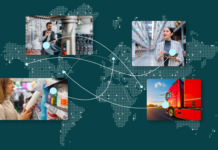Here Technologies and its partner Murata Manufacturing are delivering city authorities in Jakarta, Indonesia, roadway congestion insights and capabilities to monitor, predict and address a variety of traffic-related challenges.
By integrating map and traffic data from Here with Murata’s traffic counter system that uses LiDAR technology, city authorities in Jakarta now have unprecedented insights into traffic patterns – including real-time traffic data such as vehicle count, classification, flow direction and speed; peak traffic hours and popular travel routes – to monitor, predict, and proactively address a wide array of urban mobility challenges.
The traffic management system is also capable of measuring environmental conditions such as predicting rain based on carbon dioxide and atmospheric pressure sensors to identify areas that could be/or are flooded or impassable.
This allows for a better visualisation and management of road traffic, including changing traffic light cycles depending on traffic conditions to reduce traffic bottlenecks in the city’s busiest corridors and minimise accidents.
Hiroaki Tsumori, project manager of Traffic Counter Business at Murata, said that before the partnership with Here, they were simply overlaying traffic data onto a digitised map.
“However, our partnership with Here has paved the way for a smarter, data-driven traffic management solution that can now tackle a broader spectrum of transportation challenges in Indonesia’s capital,” said Tsumori.
Murata and Here were able to build a traffic management model that not only analyses traffic issues in Jakarta from various angles, but also provides commuters with efficient travel routes that avoid traffic congestions, reduce fuel consumption and in-turn lower carbon emissions.
As the capabilities continue to evolve, city officials in Jakarta are looking to incorporate predictive analytics that leverages historical traffic data to proactively suggest optimal routes before a traffic congestion occurs.
There are also plans to further integrate this system with Indonesia’s smart city initiatives, connecting it with traffic lights management and parking systems, as well as with public transportation networks.
















